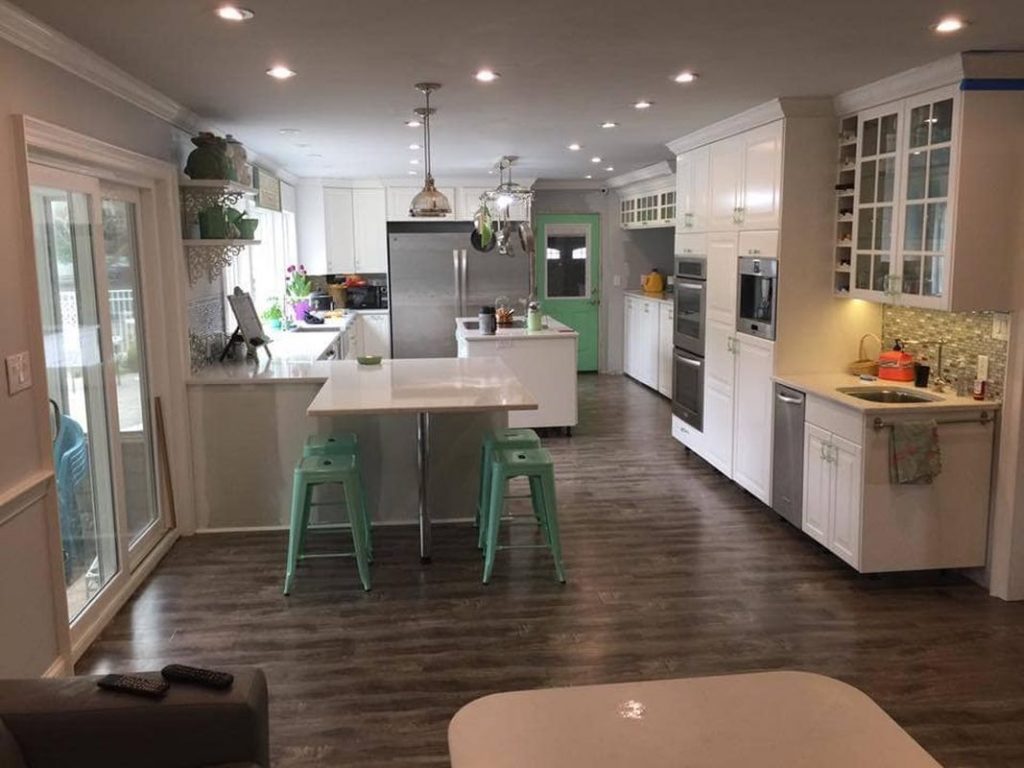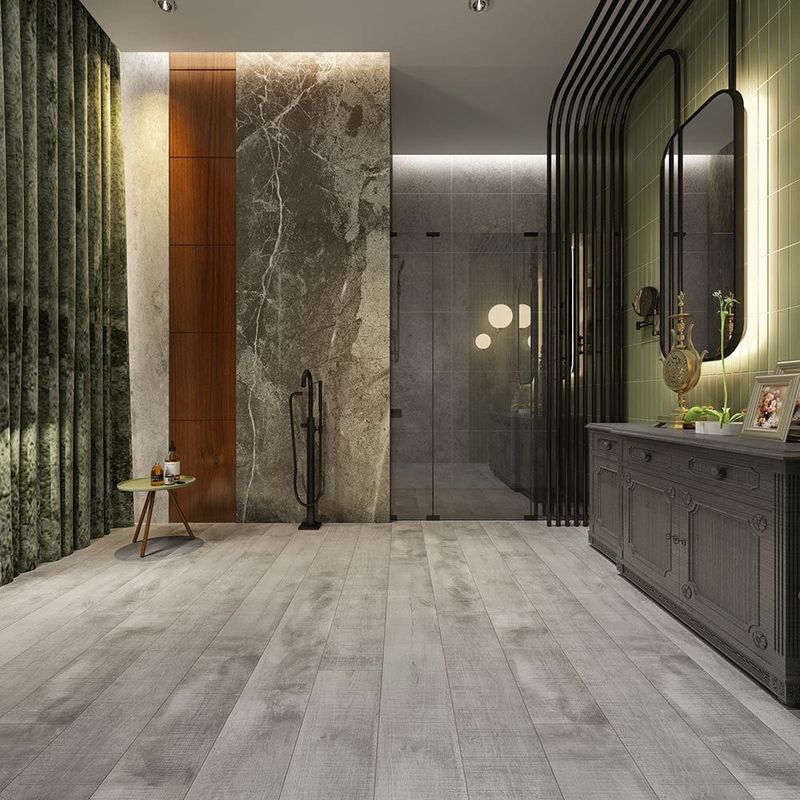How to Repair 3 Common Laminate Flooring Problems

Whether the laminate flooring in your home has been there since before you moved in or you recently installed it yourself, you want to keep it in good shape. Unfortunately, problems do come up sometimes. The good news is that in many cases, you can fix the problem without replacing the entire room’s floorboards. Check out our step-by-step guide in how to repair laminate flooring in the three most common areas.
How to Repair Laminate Flooring: Peaking
If you’ve noticed that the floorboards are pushing up against each other along the seams, creating a lump on the floor that resembles a roof’s peak, the problem is peaking. Peaking occurs when the floorboards don’t have enough space to expand and contract.
To avoid further damage, you should fix the problem as soon as possible.
Find the Underlying Laminate Flooring Problem
Peaking commonly happens when there isn’t an expansion gap between the floor and the walls, when the expansion gap is too small, or if the moldings are attached to the laminate flooring. To find the underlying issue:
- Follow the peaking boards to the nearest wall.
- Check for a gap between the board and the wall or any nearby permanent fixture such as cabinets. A 0.25-inch gap usually provides enough space.
- Check the moldings for any nails or glue that may have attached them to the floorboards.
Fix the Underlying Laminate Flooring Problem
If the moldings are attached to the floorboards, remove the nails or detach the glue.
If the floor doesn’t have an adequate expansion gap, you’ll have to make one. Simply remove the molding and cut a section of flooring between the floor and the walls. Helpful tools include spacers and a jigsaw. Replace the molding. Finished!
Fix the Peaked Boards
The peaking is the main issue. Once you’ve corrected the underlying problem, you can place a heavy object on the peak for a few days or until the boards settle back into place.
How to Repair Laminate Flooring: Creaking Floors

While occasional creaks and groans are normal — especially in older homes — regular noises are annoying and may indicate an issue with the floor. You’ll need to assess the situation and determine if you can fix it yourself or if you require professional help.
Laminate Flooring Transition Between Rooms
Unless your home has the same laminate flooring in every connecting room, you’ll find transition areas where the floorboards meet another type of flooring. For example, where laminate flooring transitions to tile. Look for floor transition strips between rooms — long, thin pieces of metal or wood — that connect one area to the next. Ideally, your floor should have them.
If there aren’t any T strips, look for expansion gaps in the connecting areas. As with walls and stationary objects, laminate flooring needs space to expand and contract here. If you don’t see a gap, you’ll need to make one, as outlined above, and then install a T strip.
Pull Up The Floor
Check for problems beneath the surface by pulling up a board or two. Is there an underlayment pad between the subfloor and the laminate flooring? If not, you can fix or at least mitigate the creaking noises by uninstalling the floorboards, adding a high-quality underlayment pad, and reinstalling the boards. This item absorbs sound and adds durability to your flooring.
Examine the Subfloor
Another possible issue is an uneven or damaged subfloor. Look for dips and humps in the floor or areas that feel spongy. Make sure to check underneath any rugs or furniture, too. If you suspect that your subfloor is rotting or uneven, you should contact a flooring professional.
How to Repair Laminate Flooring: Buckling or Warping
You’ll know that you have warped floorboards if they curve inwards like the inside of a bowl. Buckling is the opposite — when floorboards resemble an arch or an upside-down bowl. Water damage or temperature fluctuations are the most common culprits of buckling and warping. If you address the issue quickly enough, you can usually prevent the laminate flooring problems from spreading.
Look For Water Damage
Causes of water damage include:
- Standing water. It may come from a plumbing leak, an overflowed dishwasher, or from mopping with too much water.
- High humidity.
- Moisture from the subfloor.
The first two sources are easy enough to diagnose. To check your subfloor, pull up the floorboards and look for moisture or signs of mold. Also, check for an underlayment pad; not having one makes your laminate flooring susceptible to moisture damage.
Look for Expansion Gaps
Not having proper expansion gaps can cause not just peaking and creaking floors, but buckling and warping floorboards too. If most of the damage is near the walls, your problem is likely due to one of the following installation mistakes:
- Not acclimating the flooring to the home before installation.
- Not leaving an expansion gap between the floorboards and the walls, stationary objects, or transition areas.
In either case, creating expansion gaps should fix the issue.
Fix the Underlying Cause
Before you replace the damaged floorboards, you’ll need to fix the underlying cause. This task may involve:
- Taking care of any plumbing issues.
- Purchasing an underlayment pad.
- Creating expansion gaps.
- Purchasing higher-quality flooring that has a strong moisture barrier. While this step isn’t necessary, you may want to consider it if you have cheap, low-quality flooring that lacks a proper moisture barrier.
Replace the Damaged Floorboards
You’ve almost finished the job! Just follow these last steps:
- Locate the closest wall and remove the molding.
- Disconnect and remove all the planks until you reach the damaged section.
- If there’s water damage, allow the area to dry completely.
- Deal with any mold on the subfloor. Contacting a mold removal specialist is a good idea.
- When the subfloor is dry and clean, you can install the replacement floorboards.
- Reinstall the laminate flooring.
- Reattach the molding.
You don’t need to completely uninstall the flooring unless the damage is extensive or if you want to add higher-quality floorboards or underlayment. If you have damaged laminate floorboards in the middle of a large room, you may prefer to hire a flooring professional.
Knowing how to repair laminate flooring is a great skill to have under your belt. For severe damage, you should stay safe and contact a professional. However, you can fix most problems yourself or with the help of a friend.
